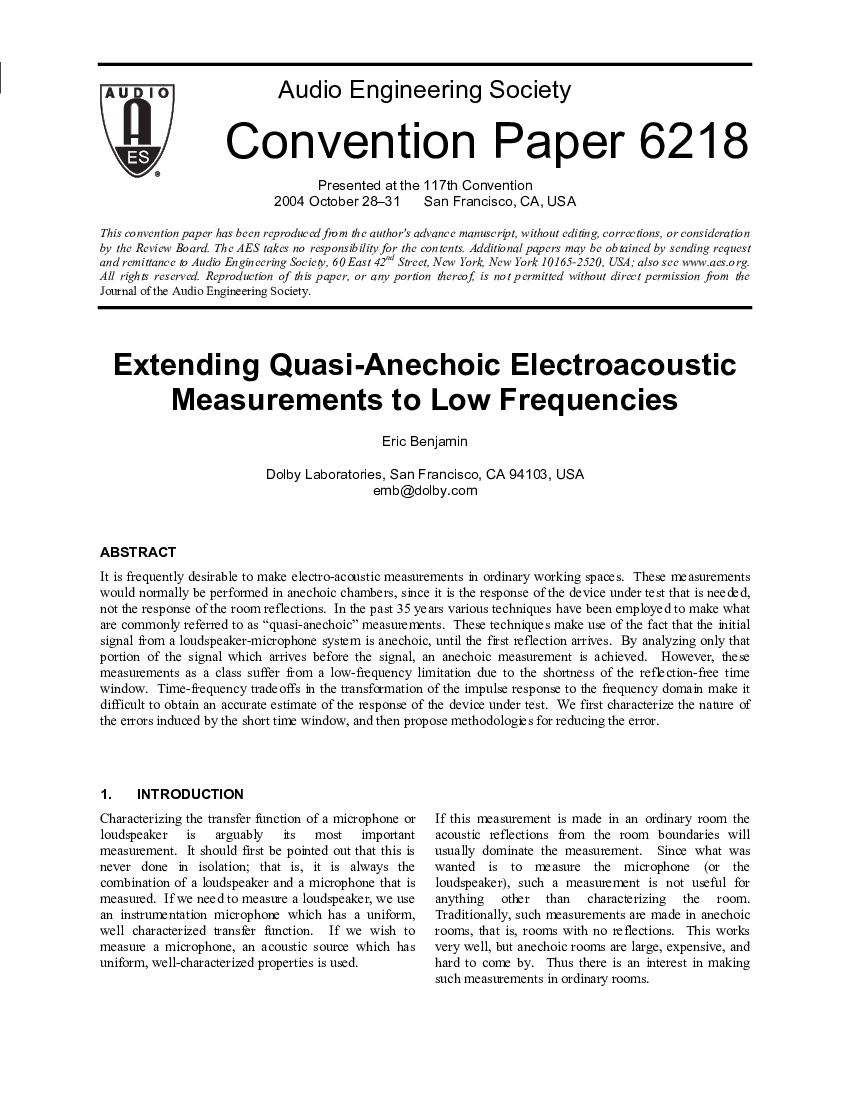Home / Publications / E-library page
You are currently logged in as an
Institutional Subscriber.
If you would like to logout,
please click on the button below.
Home / Publications / E-library page
Only AES members and Institutional Journal Subscribers can download
It is frequently desirable to make electro-acoustic measurements in ordinary working spaces. These measurements would normally be performed in anechoic chambers, since it is the response of the device under test that is needed, not the response of the room reflections. In the past 35 years various techniques have been employed to make what are commonly referred to as “quasi-anechoic” measurements. These techniques make use of the fact that the initial signal from a loudspeaker-microphone system is anechoic, until the first reflection arrives. By analyzing only that portion of the signal which arrives before the signal, an anechoic measurement is achieved. However, these measurements as a class suffer from a low-frequency limitation due to the shortness of the reflection-free time window. Time-frequency tradeoffs in the transformation of the impulse response to the frequency domain make it difficult to obtain an accurate estimate of the response of the device under test. We first characterize the nature of the errors induced by the short time window, and then propose methodologies for reducing the error.
Author (s): Benjamin, Eric
Affiliation:
Dolby Laboratories, San Francisco, CA
(See document for exact affiliation information.)
AES Convention: 117
Paper Number:6218
Publication Date:
2004-10-06
Import into BibTeX
Session subject:
Instrumentation and Measurement; Lossy and Lossless Audio Coding
Permalink: https://aes2.org/publications/elibrary-page/?id=12875
(604KB)
Click to purchase paper as a non-member or login as an AES member. If your company or school subscribes to the E-Library then switch to the institutional version. If you are not an AES member Join the AES. If you need to check your member status, login to the Member Portal.

Benjamin, Eric; 2004; Extending Quasi-Anechoic Measurements to Low Frequencies [PDF]; Dolby Laboratories, San Francisco, CA; Paper 6218; Available from: https://aes2.org/publications/elibrary-page/?id=12875
Benjamin, Eric; Extending Quasi-Anechoic Measurements to Low Frequencies [PDF]; Dolby Laboratories, San Francisco, CA; Paper 6218; 2004 Available: https://aes2.org/publications/elibrary-page/?id=12875